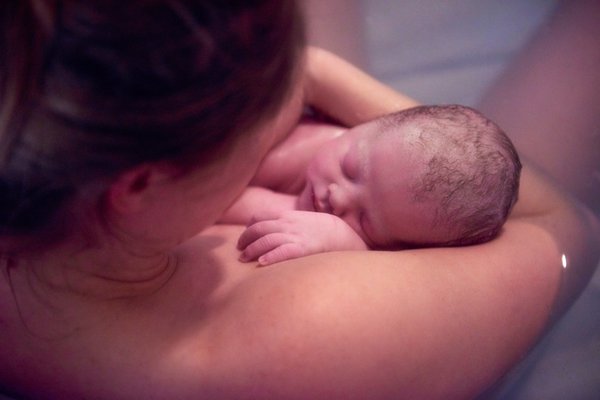There were more than 50,000 home births in the United States last year. That marked the highest total since at least 1990 and a 12% increase from 2020.
Though home births are becoming more common, they still accounted for just 1.26% of all births last year, according to a new report from the U.S. Centers for Disease Control and Prevention. And medical opinions on their safety remain mixed.
- MORE HEALTH
- Amazon launches online health clinic for common conditions. Who will use it?
- Low screening rates for lung cancer persist in the U.S.
- Child poisoning cases caused by prescription cough medicine on the rise, FDA warns
The CDC report shows home births particularly increased amid the COVID-19 pandemic, when fears of getting sick led some women to avoid the hospital. Home births increased by 22% between 2019 and 2020.
That trend continued into 2021, when 30 states, including Pennsylvania, reported significant increases in home births. They jumped by 11% in Pennsylvania last year. That followed a 13% increase from 2019 to 2020. In New Jersey, home births surged by 36% between 2019 and 2020, but only rose by 2% last year.
Why do some women prefer a home birth?
Some women prefer to give birth at home to avoid medical interventions, such as pain medication, labor induction or the use of forceps and other instruments during delivery, the Mayo Clinic says. Some wish to give birth in the comfort of their home, with family and friends on hand. Others worry about the cost of a hospital birth, or have cultural or religious concerns about giving birth in a hospital.
Studies have shown that planned home births are associated with less maternal infections and fewer maternal interventions such as drugs and episiotomies, though there are fewer episiotomies performed these days.
In some parts of the country, expectant mothers have to travel long distances to find a hospital with labor and delivery units. Many hospitals have closed down their obstetrics services.
The COVID-19 pandemic added new factors, including tighter hospital visitation policies and the fear that mothers would be separated from their babies due to someone testing positive for the coronavirus.
What are the risks of a home birth?
The American Academy of Pediatrics recognizes that many women wish to give birth at home, but stops short of recommending home births. Planned home births in the U.S. increase the likelihood of an infant death by two or three times, the AAP says. They also increase the chance of low Apgar scores – the standard assessment that babies undergo immediately after delivery – and neonatal seizures.
Only women who do not have preexisting medical conditions or a history of pregnancy complications, such as gestational diabetes, preeclampsia or an increased risk of preterm birth, should consider a planned home birth, according to the AAP's guidelines.
The AAP advises two medical providers be present during the birth. They should have all the necessary training and equipment for infant resuscitation, and the nearest hospital should be no more than 20 minutes away.
The American College of Obstetricians and Gynecologists advises against a planned home birth if a woman is delivering more than one baby, if the baby isn't in a headfirst position or if the woman previously had a Caesarean birth.
Even women who appear to be good candidates for a home birth can face complications during delivery that may necessitate a transfer to a hospital, OB-GYN experts say. A transfer is advised if baby flips out of the headfirst position or if the expectant mother develops high blood pressure, becomes feverish or starts to bleed. If labor stalls and doesn't progress naturally, medical intervention may be needed.
How to create a home birth plan
The American College of Nurse-Midwives strongly supports home birth, advocating that it can be a safe alternative to a hospital birth for some women.
Making an informed decision about a home birth is crucial for the safety of an expectant mother and her baby. Women are advised to educate themselves on the birthing process and the potential risks, especially those delivering for the first time. They should talk to their health care providers about any health issues that could complicate the delivery and get assistance in creating a birth plan.
A home birth plan should include choosing two qualified health care professionals, such as a physician and a certified midwife or nurse-midwife to offer assistance. One health care provider should be specifically trained to care for the newborn, the AAP says.
The plan also should include arrangements to get to a hospital quickly in case of an emergency. Women are advised to make a list of the equipment and supplies they will need to ensure a safe birthing experience.


